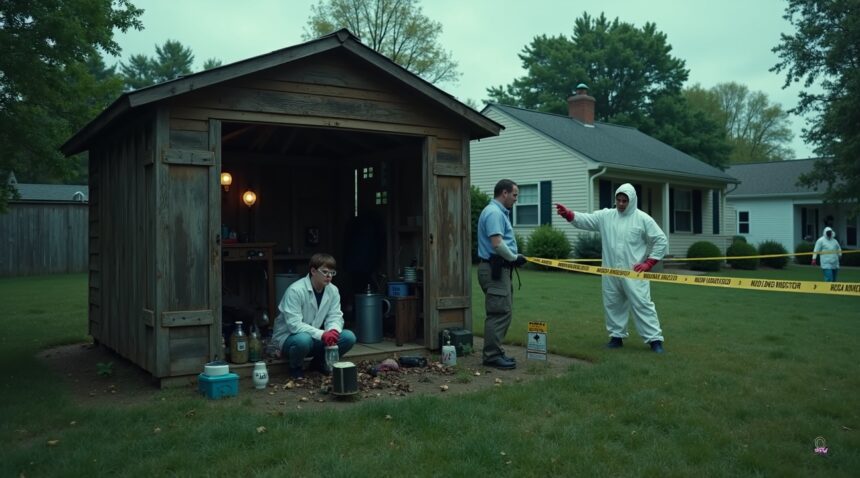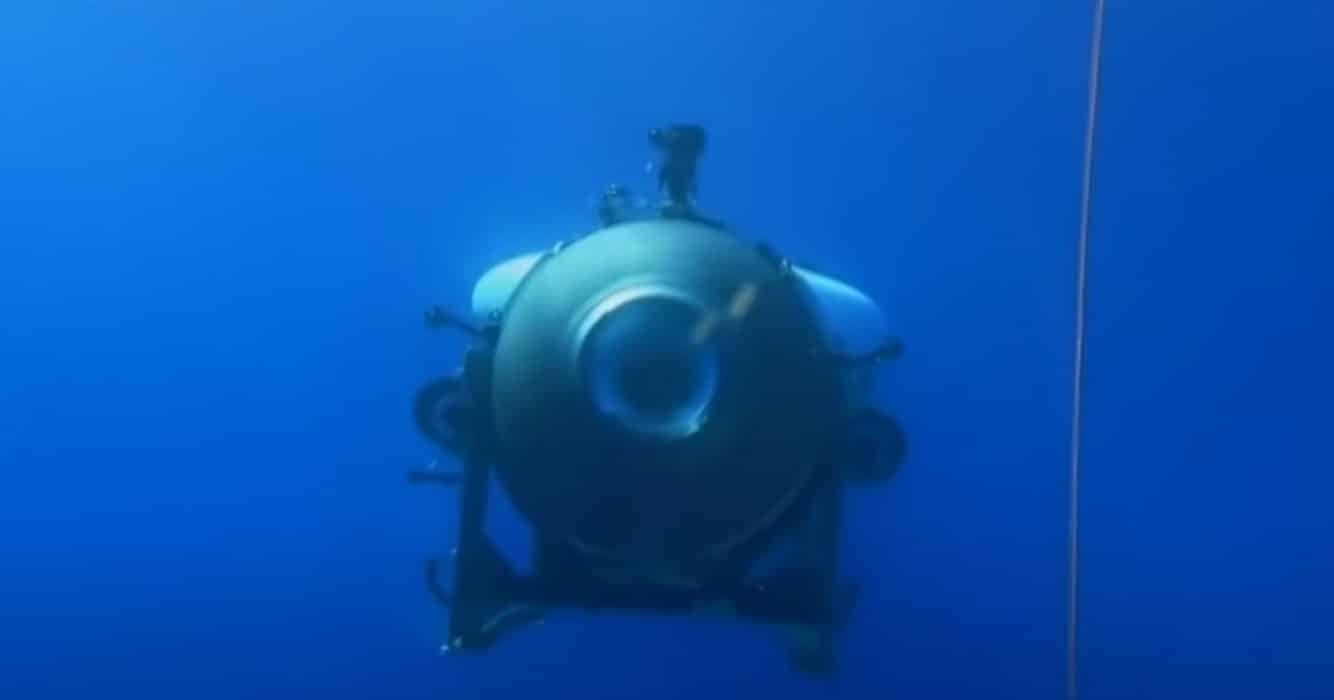In August 1994, 17-year-old David Hahn turned a quiet suburban potting shed in Golf Manor, Michigan, into a hazardous nuclear lab that would shock his community and alarm federal authorities.
David Hahn’s Backyard Nuclear Experiment
What began as a pursuit of a Boy Scout merit badge quickly escalated into a dangerous scientific project. David Hahn collected radioactive substances from a variety of common household items, assembling them into a makeshift nuclear reactor inside his mother’s backyard shed. His efforts unintentionally created radiation levels approximately 1,000 times higher than normal background levels, triggering contamination that extended to surrounding homes.
Sources of Radioactive Material
- Americium from smoke detectors was harvested for use in his homemade neutron source.
- Thorium, found in camping lantern mantles, provided another radioactive component for his project.
- Radium was extracted from vintage clock dials, once used for their luminescent paint.
Community and Environmental Impact
- Radiation contamination reached as far as five homes away, alarming local residents.
- The Environmental Protection Agency (EPA) eventually declared the site as an “imminent and substantial endangerment to public health.”
- Hazardous cleanup involved removing the contaminated shed, soil, and surrounding materials over a span of several weeks.
Federal Oversight and Regulatory Gaps
A major fallout from the incident was the revelation of regulatory loopholes. Despite the severity of the contamination, federal response was delayed due to confusion over agency jurisdiction. The EPA only intervened five months after the high radiation levels were first reported because of unclear regulations pertaining to nuclear activities carried out on private property.
- Coordination challenges between local, state, and federal entities delayed critical responses.
- Regulatory deficiencies around radioactive consumer products allowed Hahn easy access to hazardous materials.
- The incident underscored the need for improved systems to detect and prevent future amateur nuclear activities.
David Hahn’s story has since become a cautionary tale. Additional details about his nuclear adventures can be found in [The Radioactive Boy Scout](https://en.wikipedia.org/wiki/David_Hahn), a biography that dives deeper into his life and the broader implications of his actions.
The Boy Scout Who Turned His Backyard Shed Into a Radioactive Disaster Zone
A Nuclear Experiment Gone Wrong
In August 1994, what started as an ambitious Boy Scout merit badge project spiraled into one of the most shocking nuclear incidents in suburban America. David Hahn, a 17-year-old high school student from Golf Manor, Michigan, had secretly spent months conducting radioactive experiments in his mother’s potting shed. Police made the discovery when they pulled Hahn over for an unrelated matter and he nervously warned officers that materials in his car trunk were radioactive.
The revelation sparked immediate concern among law enforcement and federal authorities. Hahn’s backyard laboratory contained a dangerous collection of radioactive materials that he had painstakingly gathered from everyday sources. Smoke detectors provided americium-241, camping lantern mantles supplied thorium, and clock dials yielded radium. Through mail-order purchases and creative extraction methods, this determined teenager had assembled enough radioactive material to construct what he called a “breeder reactor.”
Devastating Environmental Impact
Testing conducted after the discovery revealed the full scope of the contamination crisis. Radiation levels in and around the potting shed measured 1,000 times higher than normal background radiation. The contamination wasn’t contained to Hahn’s property – radiation detectors picked up elevated readings five houses down from the family residence, demonstrating how far the dangerous materials had spread throughout the neighborhood.
The Environmental Protection Agency quickly stepped in to assess the situation. Their findings were alarming enough that they classified the entire site as “an imminent and substantial endangerment to public health.” The agency expressed particular concern about the risks posed to humans, animals, and the local food chain. Radioactive particles had contaminated soil, potentially affecting anyone who came into contact with the area.
EPA officials faced the challenging task of decontaminating not just the shed where Hahn conducted his experiments, but also surrounding areas where radioactive dust and debris had settled. The cleanup required specialized teams equipped with protective gear and radiation detection equipment. Contaminated soil had to be carefully removed and transported to licensed disposal facilities, a process that took weeks to complete properly.
Hahn’s story bears similarities to other young inventors who’ve pushed boundaries in dangerous ways. Creative minds often find ways to achieve remarkable feats, though not always safely. Unlike prodigious young talent that follows proper channels, Hahn’s unsupervised experimentation created genuine public health risks.
The incident highlighted serious gaps in regulatory oversight of radioactive materials available to consumers. Many of the items Hahn used contained small amounts of radioactive substances that were perfectly legal to purchase. However, when concentrated and processed using his homemade techniques, these materials became genuinely dangerous. The case prompted discussions about better controls on consumer products containing radioactive elements.
Neighbors expressed shock and concern upon learning about the contamination in their community. Many had lived near the Hahn residence for years without any indication that dangerous experiments were taking place just yards from their homes. The incident raised questions about parental supervision and the need for adults to monitor teenagers’ scientific pursuits more closely.
Federal authorities treated the case as an environmental emergency rather than a criminal matter, recognizing that Hahn’s intentions weren’t malicious. However, the consequences were severe enough to require extensive remediation efforts and ongoing monitoring of the affected area. The EPA’s response demonstrated how seriously government agencies take any threat involving radioactive contamination, regardless of the source or intent behind it.
This extraordinary case serves as a stark reminder that scientific curiosity, while admirable, must be balanced with proper safety protocols and adult oversight. Hahn’s determination to build a nuclear reactor showcased impressive technical knowledge, but his methods created lasting environmental damage that affected an entire neighborhood.
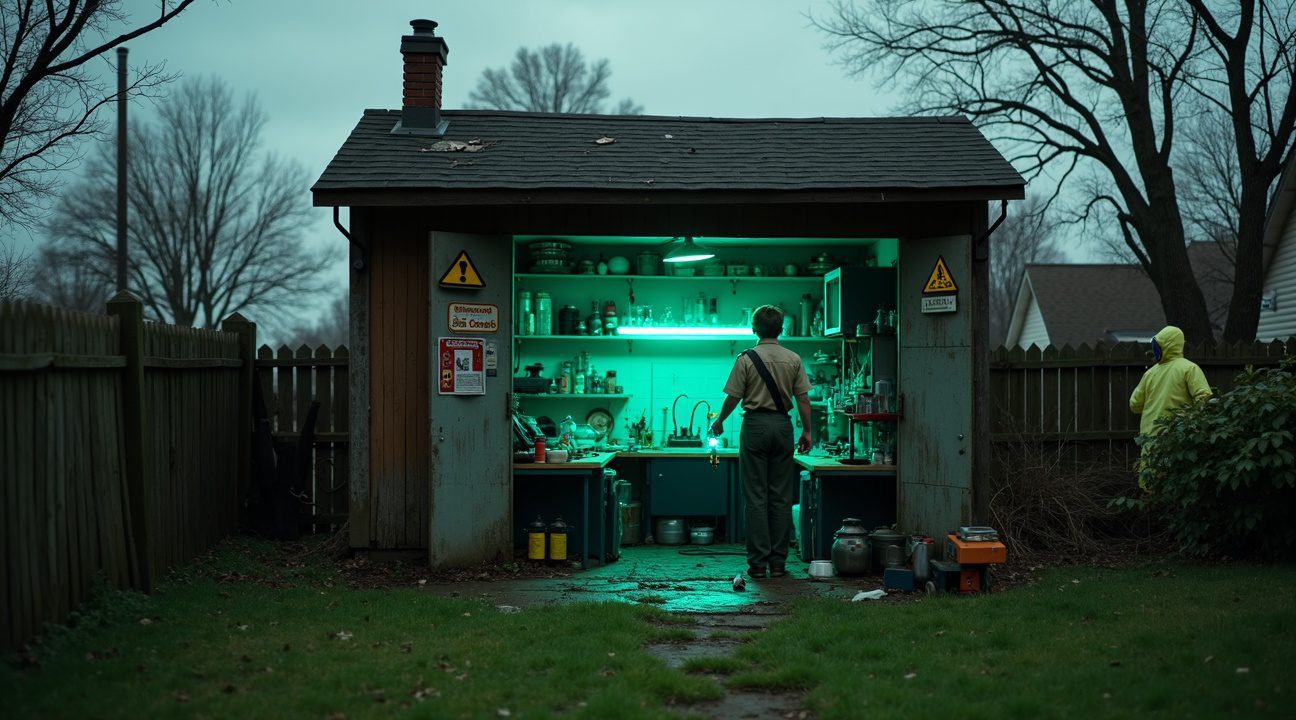
Federal Agencies Scramble to Contain Amateur Nuclear Project
The teenage inventor’s radioactive experiments triggered an unprecedented federal response that caught multiple agencies off guard. When authorities discovered the extent of David Hahn’s nuclear project, they immediately activated the Federal Radiological Emergency Response Plan—a protocol typically reserved for major nuclear incidents.
Multi-Agency Response Coordination
The complexity of the situation demanded expertise from several federal organizations working in tandem. The U.S. Department of Energy took the lead role, bringing their specialized knowledge of radioactive materials to assess the contamination levels. The Nuclear Regulatory Commission joined the response, though their typical oversight authority didn’t clearly apply to this unique backyard scenario.
The Environmental Protection Agency became involved to evaluate environmental contamination risks, while local police secured the immediate area. The FBI also participated in the investigation, examining whether any laws had been violated through the acquisition and use of radioactive materials. This multi-agency approach, while comprehensive, created coordination challenges that slowed the initial response.
Cleanup Efforts and Jurisdictional Confusion
Federal responders faced an immediate decision about how to handle the contaminated materials. They declared the entire shed and its contents as hazardous waste, requiring specialized removal procedures. Teams in protective suits carefully dismantled the makeshift laboratory, packaging each item according to strict radioactive waste protocols.
The cleanup process revealed significant gaps in regulatory oversight. Since Hahn’s activities occurred on private property, determining which agency had primary jurisdiction became complicated. This confusion contributed to substantial delays in the response timeline, with the EPA not intervening until five months after the initial discovery of the project.
I find it remarkable that despite the activation of federal emergency protocols, there’s no documented evidence of a full neighborhood evacuation. This suggests that while authorities took the contamination seriously enough to deploy multiple agencies, they may have underestimated the broader community risk. The absence of comprehensive neighborhood cleanup documentation raises questions about whether surrounding properties received adequate attention.
The regulatory challenges extended beyond immediate safety concerns. Existing frameworks weren’t designed to handle amateur nuclear experiments conducted in residential areas. This gap in oversight became apparent as agencies struggled to determine appropriate legal consequences and prevention measures.
Similar to how a YouTuber invents first working lightsaber and captures global attention, Hahn’s nuclear project highlighted the potential for amateur inventors to create situations far beyond typical regulatory scope. The incident exposed weaknesses in monitoring and preventing such dangerous experiments.
The federal response ultimately succeeded in containing the immediate hazard, but questions remained about long-term environmental impact and community safety. The removal of contaminated materials followed established protocols, yet the delayed EPA intervention suggests coordination between agencies could have been more efficient.
This case established important precedents for handling future amateur nuclear incidents. The response demonstrated both the capabilities and limitations of federal emergency protocols when applied to unconventional scenarios. While agencies successfully removed the immediate threat, the incident revealed the need for better early detection systems and clearer jurisdictional guidelines for private property situations involving radioactive materials.
The aftermath of this federal response continues to influence how authorities approach similar cases. The combination of delayed intervention, jurisdictional confusion, and incomplete neighborhood assessment created a template that agencies have since worked to improve. Future amateur inventors pursuing dangerous projects may find themselves subject to much swifter and more comprehensive federal oversight as a direct result of lessons learned from this suburban nuclear incident.
How a Teenager Built a Nuclear Device Using Everyday Items
David Hahn’s pursuit of nuclear science led him to exploit an astonishing fact about everyday consumer products. Many common household items contain radioactive materials that, when collected in sufficient quantities, can create a dangerous situation.
Extracting Radioactive Elements from Common Products
Hahn’s collection process centered on dismantling ordinary consumer items that most people handle without concern. He extracted thorium from lantern mantles, which manufacturers use to create the bright white light in camping lanterns. Old clocks provided him with radium, particularly those with luminous dials from earlier decades when radium paint was standard. Gun sights yielded tritium, while smoke detectors became his primary source for americium—a radioactive element found in ionization-type smoke alarms.
The teenager’s methodical approach involved purchasing dozens of these items from various sources to accumulate meaningful quantities of radioactive material. Each smoke detector contained only a tiny amount of americium, so he needed many units to gather enough material for his experiments. His mother’s shed became a makeshift laboratory where he processed these everyday objects.
Constructing Nuclear Devices with Household Materials
Using simple household materials, Hahn created increasingly sophisticated devices that demonstrated his understanding of nuclear physics principles. He employed pickle jars and coffee filters as basic laboratory equipment, transforming his mother’s property into an amateur nuclear facility. His construction methods included building a neutron source by combining different radioactive materials in specific configurations.
The project culminated in what Hahn called a neutron gun—a device designed to bombard other materials with neutrons to create additional radioactive substances. Although his creation never functioned as a true nuclear reactor, it became a powerful neutron source capable of emitting dangerous levels of radiation. The device could detect radiation from several houses away, creating a radioactive environment that extended well beyond his backyard laboratory.
Much like other young innovators who’ve captured attention for their extraordinary achievements—such as the 14-year-old hired by SpaceX—Hahn demonstrated remarkable technical capability. However, his nuclear experiments posed serious health risks that distinguished his work from safer innovative projects.
The sophistication of his homemade nuclear experiments eventually attracted the attention of federal authorities. His ability to create a significant neutron source using only materials available to consumers highlighted concerning gaps in regulatory oversight of radioactive consumer products.
From Chemistry Set to Nuclear Obsession: The Making of the “Radioactive Boy Scout”
David Hahn’s path to becoming known as the “Radioactive Boy Scout” began innocently enough at age 10 with a simple gift. His parents gave him a copy of The Golden Book of Chemistry Experiments, sparking what would become a dangerous fascination with nuclear chemistry. The book introduced young David to basic chemical principles, but his curious mind quickly pushed beyond conventional boundaries.
As David progressed through his teenage years, his interest in chemistry intensified dramatically. He spent countless hours conducting experiments in his bedroom, transforming what started as typical childhood curiosity into something far more concerning. His parents initially encouraged his scientific interests, unaware that their son was developing an obsession that would soon put an entire neighborhood at risk.
The Eagle Scout Project That Changed Everything
By age 17, David had joined the Boy Scouts and set his sights on earning the prestigious Eagle Scout badge. Rather than choosing a conventional community service project, he decided to construct what he called a “nuclear reactor” in his mother’s backyard potting shed in Golf Manor, Michigan. This wasn’t just ambitious thinking—it was the beginning of a genuinely hazardous situation that would eventually require federal intervention.
David’s determination to achieve his Eagle Scout badge drove him to research nuclear physics extensively. He contacted government agencies and universities, posing as an adult teacher to obtain information about radioactive materials and nuclear reactions. His persistence and apparent knowledge impressed officials who unknowingly provided guidance that would fuel his dangerous experiments.
The transformation from curious child to obsessed teenager happened gradually but steadily. David’s experiments evolved from simple chemical reactions to increasingly complex attempts at nuclear manipulation. He began collecting radioactive materials from household items, including:
- Smoke detectors
- Camping lantern mantles
- Antique pottery
- Clock dials with radium-based paint
His methods became more sophisticated as he learned to extract and concentrate radioactive elements.
Working in complete secrecy, David converted his mother’s potting shed into a makeshift laboratory. He installed equipment scavenged from various sources and began what he believed were controlled nuclear experiments. The teenager’s confidence in his abilities far exceeded his understanding of radiation safety protocols, creating conditions that would soon contaminate the surrounding area.
David’s obsession grew stronger with each experiment. He documented his progress meticulously, believing he was on the verge of achieving nuclear fission in his backyard facility. The line between scientific curiosity and reckless endangerment had been crossed long before anyone realized what was happening in that seemingly innocent garden shed.
The young inventor’s story shares similarities with other remarkable teenage achievements, though his path took a far more dangerous turn than young prodigies working with established organizations. Unlike controlled environments where teenage innovation thrives safely, David’s unsupervised experiments created genuine public health risks.
His dedication to the project consumed his daily routine. David spent hours researching nuclear physics, acquiring materials through questionable means, and conducting increasingly risky experiments. The teenager’s commitment to his Eagle Scout project had evolved into something that would ultimately attract the attention of federal authorities and hazmat teams.
The transformation from chemistry enthusiast to nuclear experimenter illustrates how unchecked curiosity can lead to dangerous territory. David’s story serves as a cautionary tale about the importance of proper supervision and safety protocols in scientific experimentation, particularly when dealing with potentially hazardous materials.
What began with The Golden Book of Chemistry Experiments had spiraled into a situation that would eventually require EPA cleanup efforts and federal investigation. David’s journey from curious 10-year-old to teenage nuclear experimenter demonstrates how passion for science, without proper guidance and safety measures, can create serious consequences for entire communities.
https://www.youtube.com/watch?v=9G8bA1J9wu8
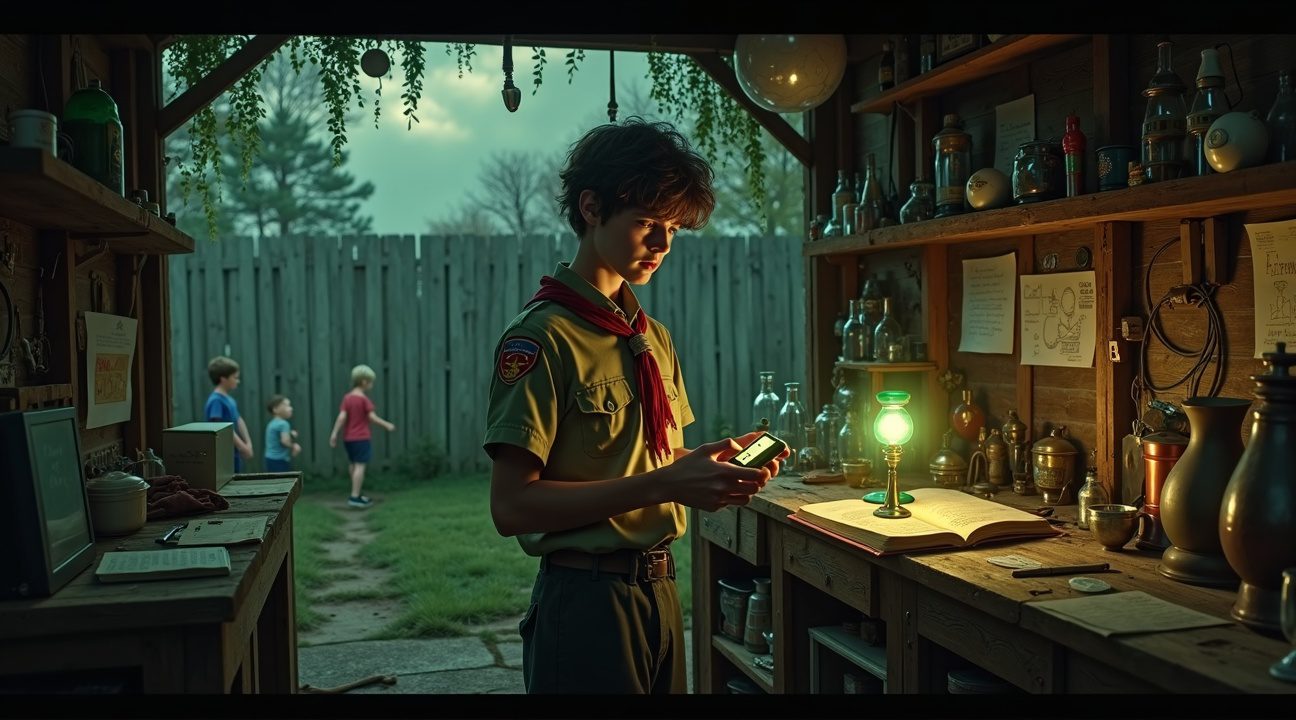
The Risks Amateur Nuclear Builders Face Without Professional Safety Measures
Building nuclear devices without proper oversight creates significant dangers that extend far beyond the builder’s immediate workspace. David Hahn’s backyard nuclear reactor project exemplifies how amateur nuclear experiments can spiral into serious health and environmental hazards when conducted without professional safety protocols.
Critical Safety Equipment Amateur Builders Typically Lack
Professional nuclear facilities require extensive safety infrastructure that amateur builders simply cannot replicate at home. These essential components include:
- High-voltage power supplies with proper grounding and electrical safety systems
- Radiation detection instruments calibrated for accurate monitoring
- Specialized containment systems designed to prevent radioactive material leakage
- Emergency response protocols and equipment for radiation exposure incidents
- Professional-grade ventilation systems to prevent airborne contamination
Hahn’s project demonstrated the consequences of proceeding without these safeguards. His homemade reactor lacked proper radiation shielding, accurate detection methods, and containment protocols that nuclear professionals consider absolutely essential. The result was radioactive contamination that spread beyond his intended workspace into the surrounding neighborhood.
Amateur nuclear experiments pose unique challenges because radiation remains invisible and often undetectable without specialized equipment. Unlike other dangerous hobbies where hazards are immediately apparent, radiation exposure can occur without any immediate symptoms or warning signs. This silent threat makes proper monitoring equipment and safety protocols even more critical.
The regulatory framework exists for important reasons that amateur builders often underestimate. The NRC and EPA establish licensing requirements not to discourage scientific curiosity, but to ensure that anyone working with radioactive materials possesses adequate training and safety resources. These agencies understand that nuclear work requires specialized knowledge about radiation physics, contamination control, and emergency response procedures.
Professional nuclear workers undergo extensive training before handling radioactive materials. They learn to recognize contamination risks, properly use detection equipment, and implement containment procedures that prevent radiation from escaping controlled areas. This training covers everything from personal protective equipment usage to understanding how different types of radiation behave in various materials.
Hahn’s case illustrates what happens when enthusiasm for nuclear science outpaces safety knowledge. His project accumulated radioactive materials without proper storage protocols, created reaction conditions without adequate monitoring, and operated equipment without understanding the full scope of potential consequences. The contamination that resulted required professional cleanup crews and extensive environmental monitoring.
The financial costs of amateur nuclear accidents extend far beyond the initial project expenses. Radiation cleanup requires specialized contractors, extensive testing, and sometimes permanent relocation of affected residents. These costs typically reach hundreds of thousands of dollars, far exceeding what most individuals could afford to remediate.
Amateur nuclear builders also face serious legal consequences for unregulated experiments. Federal agencies treat unauthorized possession and use of radioactive materials as serious violations that can result in criminal charges, substantial fines, and permanent restrictions on future scientific activities. The legal framework treats radiation safety violations seriously because the potential for widespread harm extends beyond the immediate experimenter.
Modern technology has made some nuclear materials more accessible than in previous decades, but this accessibility doesn’t reduce the inherent dangers involved. Creative inventors continue pushing boundaries in various fields, but nuclear experimentation requires professional oversight that other innovative projects don’t need.
The scientific curiosity driving amateur nuclear projects deserves recognition and proper channeling through legitimate educational and research opportunities. Universities, national laboratories, and licensed facilities offer pathways for aspiring nuclear scientists to pursue their interests safely under professional supervision. These legitimate alternatives provide access to proper equipment, expert guidance, and safety protocols that protect both the experimenter and surrounding community.
Professional nuclear safety isn’t just about following regulations – it represents decades of accumulated knowledge about radiation protection that amateur builders cannot replicate independently. This expertise becomes particularly crucial when dealing with high-energy reactions, radioactive decay products, and contamination control measures that require specialized understanding to implement effectively.
Why Regulatory Agencies Were Slow to Respond to Backyard Nuclear Experiments
David Hahn’s radioactive backyard reactor exposed critical gaps in federal oversight that few people knew existed. The Nuclear Regulatory Commission (NRC), designed to monitor commercial and institutional nuclear facilities, found itself essentially powerless when confronted with amateur experiments on private property. Federal agencies discovered they lacked clear authority to intervene quickly when someone builds dangerous nuclear devices in residential areas.
Jurisdictional complications created a bureaucratic maze that delayed decisive action for months. The NRC’s licensing framework simply didn’t account for teenagers assembling reactor components in suburban sheds. Private property laws further complicated matters, as agencies couldn’t immediately enter Hahn’s property without proper legal justification. This regulatory blindspot allowed dangerous radiation levels to persist while officials debated their authority to act.
Critical Weaknesses in Nuclear Oversight Systems
The EPA’s five-month delay in responding revealed several systemic problems that continue to challenge nuclear safety today:
- Unclear jurisdictional boundaries between federal agencies when dealing with non-commercial nuclear activities
- Limited authority over private property where no commercial nuclear license exists
- Insufficient coordination protocols between local emergency responders and federal nuclear experts
- Gaps in monitoring systems that rely heavily on self-reporting from licensed facilities
These regulatory limitations meant that neighbors remained exposed to elevated radiation levels while agencies sorted through legal complexities. The incident demonstrated how current nuclear oversight primarily focuses on institutional facilities, leaving amateur experiments largely unmonitored until they become dangerous.
Federal agencies learned hard lessons about jurisdictional authority from Hahn’s case. The experience highlighted how regulatory frameworks built for commercial nuclear power couldn’t adequately address amateur nuclear experimentation. Even today, similar innovative inventors might face similar regulatory gaps when their projects venture into dangerous territory.
The slow response also revealed coordination problems between local and federal authorities. Local emergency responders lacked training to recognize nuclear hazards, while federal experts couldn’t act without proper jurisdictional authority. This disconnect allowed a serious radiological situation to persist far longer than it should have, ultimately requiring extensive cleanup efforts that could have been avoided with swifter intervention.
https://www.youtube.com/watch?v=0vVUq39wW_U
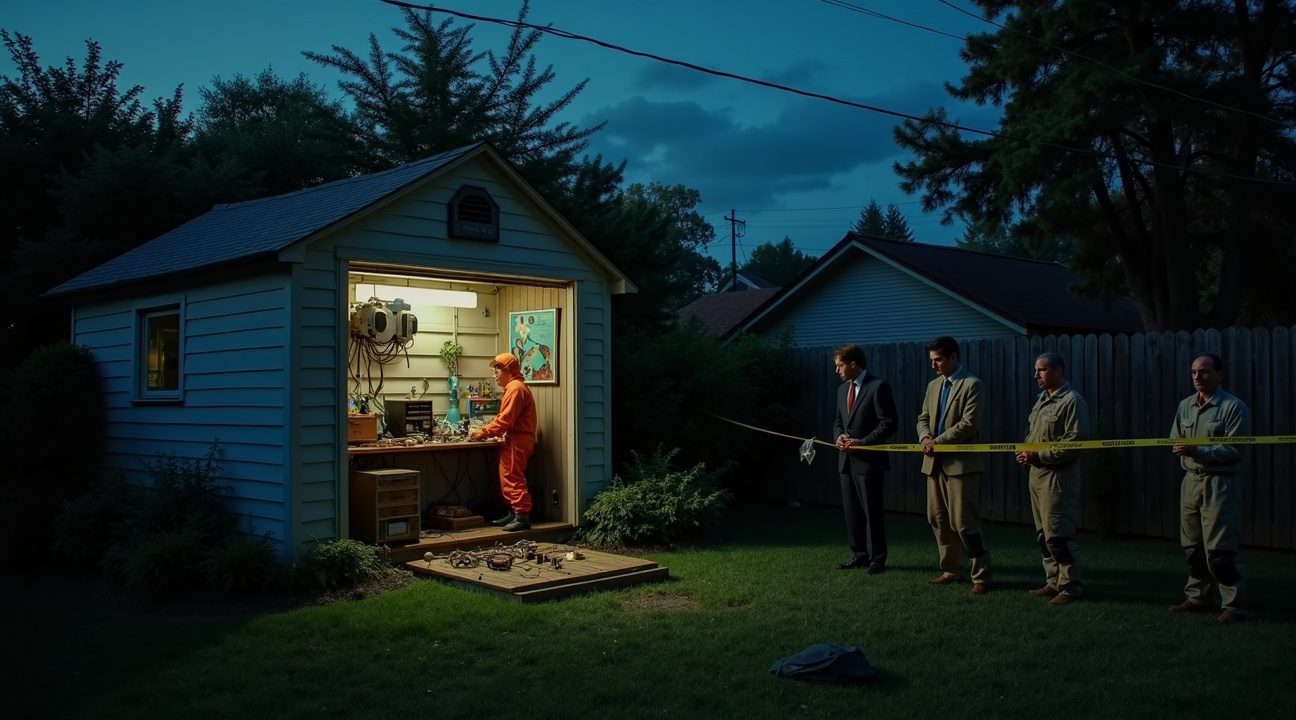
Sources:
Harper’s Magazine – “The Radioactive Boy Scout, by Ken Silverstein”
IFLScience – “The ‘Radioactive Boy Scout’ Who Built A Nuclear Reactor In His Mom’s Back Yard”
GOOD – “Radioactive Boy Scout accidentally built a nuclear reactor in his mother’s backyard”
Wikipedia – “David Hahn”
YouTube – “How Teen David Hahn Built a Nuclear Reactor” (Summary transcript)
Instructables – “Build a Fusion Reactor”

